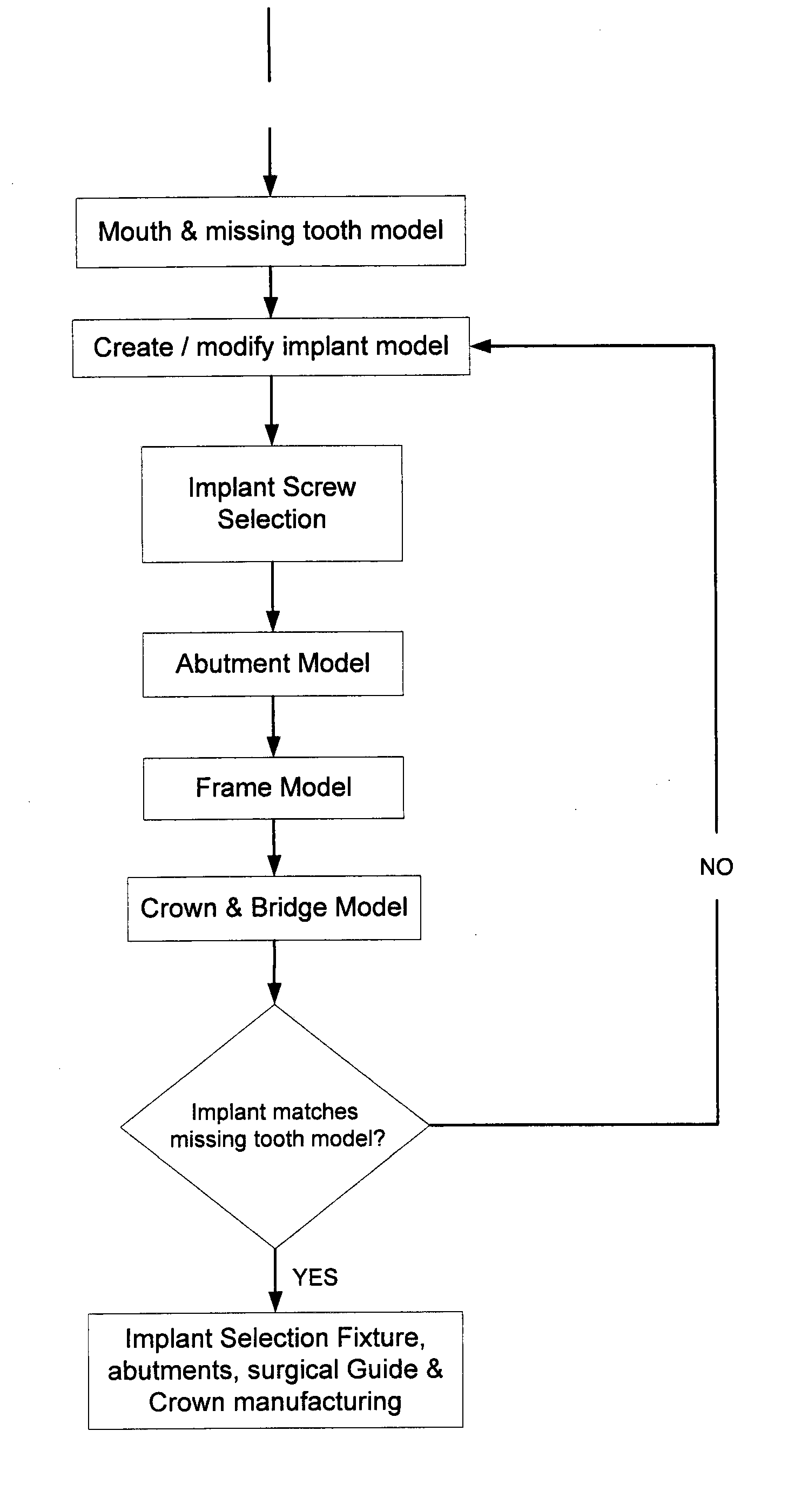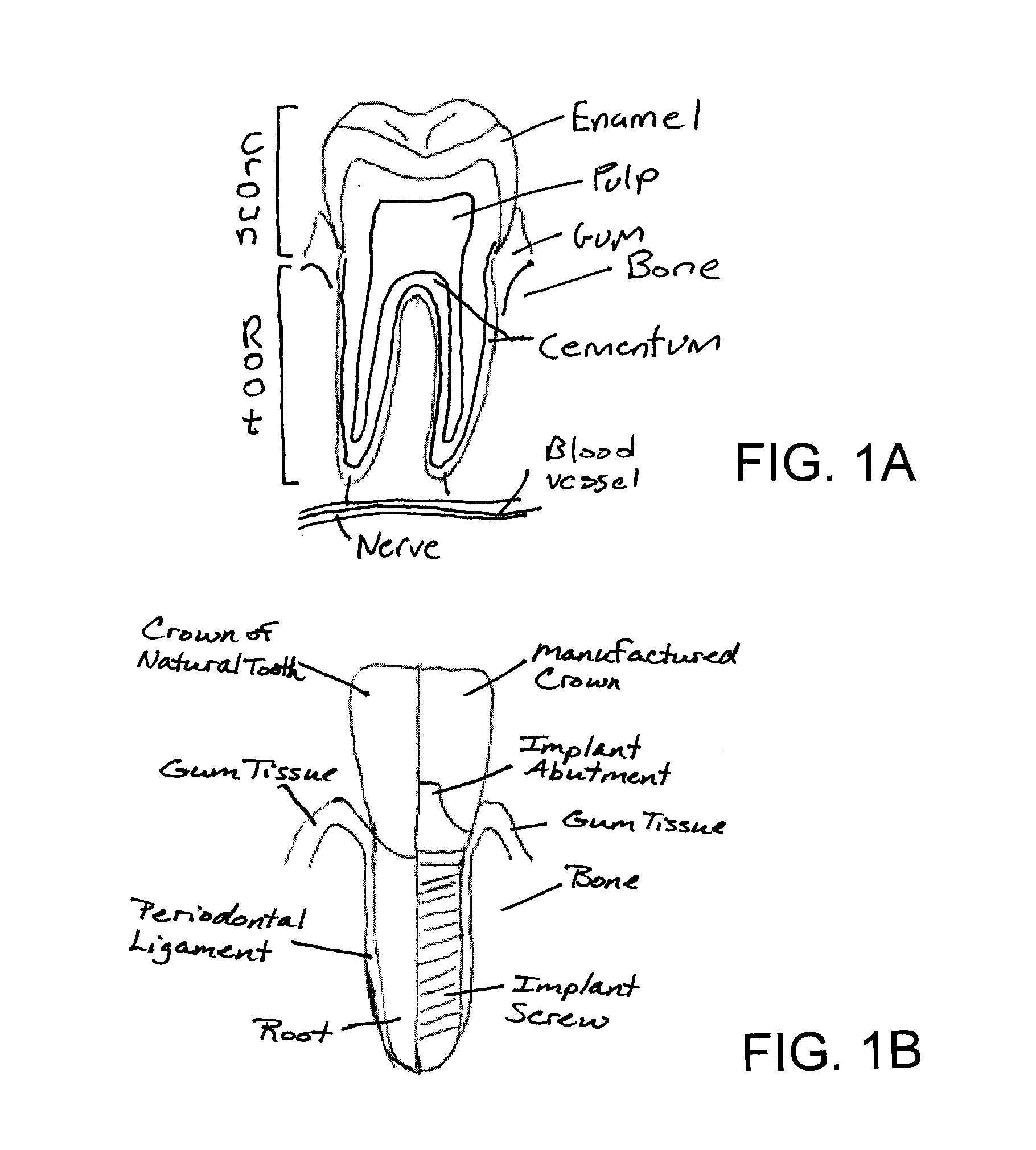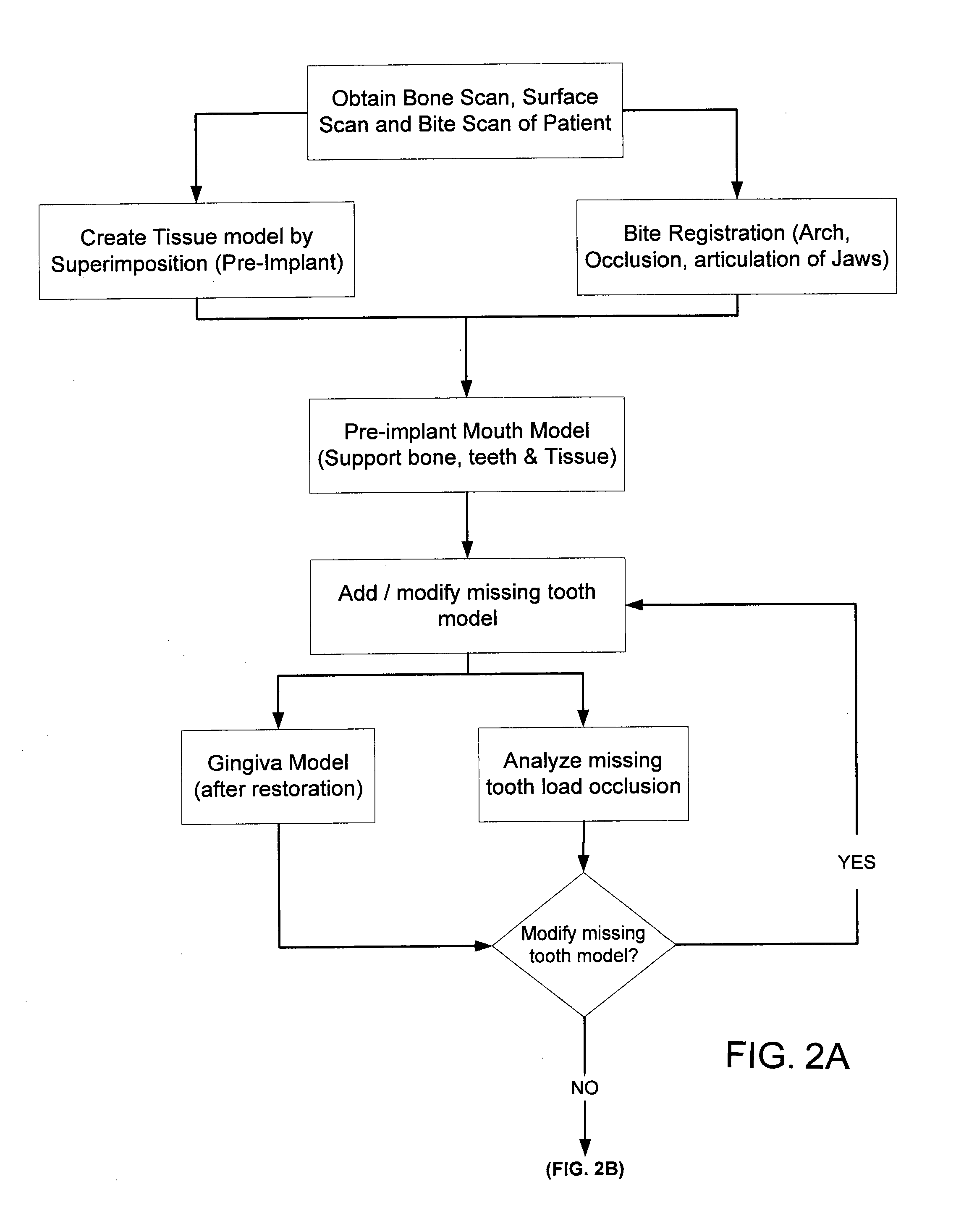System, Method And Apparatus For Tooth Implants
a technology of tooth implants and implants, applied in the field of dental implants, can solve the problems of reducing the stability of the implant, so as to facilitate the proper placement of the fixture, maximize the bone surface area of the implant, and high predictability
- Summary
- Abstract
- Description
- Claims
- Application Information
AI Technical Summary
Benefits of technology
Problems solved by technology
Method used
Image
Examples
examples
[0126]The following provide examples of methods of design and ultimate manufacture of a healing, temporary and final abutment, temporary and final crowns and bridges, and a surgical guide.
[0127]The healing, temporary and final abutment may have a unique design and manufacturing process. For a healing abutment:
[0128]1. Define the core of the abutment height and width “#5”—The core should be between “1-7 mm / Height”
[0129]2. Insert the axis hole chimney
[0130]3. Export a STL file for 3-D printing
[0131]For a temporary abutment
[0132]1. Define the core of the abutment height and width “#5”—The core should be between “1-7 mm / Height”. Then define the body of the abutment shape and height.
[0133]2. Insert the axis hole chimney
[0134]3. Export a STL file for 3-D printing
[0135]For a final abutment:
[0136]1. Define the core of the abutment height and width “#5”—The core should be between “1-7 mm / Height”. Then define the body of the abutment shape and height.
[0137]2. Insert the axis hole chimney
[0138...
PUM
 Login to View More
Login to View More Abstract
Description
Claims
Application Information
 Login to View More
Login to View More - R&D
- Intellectual Property
- Life Sciences
- Materials
- Tech Scout
- Unparalleled Data Quality
- Higher Quality Content
- 60% Fewer Hallucinations
Browse by: Latest US Patents, China's latest patents, Technical Efficacy Thesaurus, Application Domain, Technology Topic, Popular Technical Reports.
© 2025 PatSnap. All rights reserved.Legal|Privacy policy|Modern Slavery Act Transparency Statement|Sitemap|About US| Contact US: help@patsnap.com



